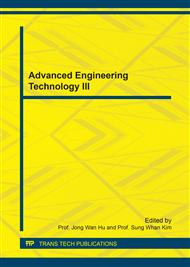p.397
p.403
p.409
p.417
p.423
p.429
p.434
p.442
p.450
Attack on Vehicular Platooning and Mitigation Strategy: A Survey
Abstract:
Through vehicular platooning, a group of autonomous vehicles move together under the same control law with maintaining constant inter-vehicle distance and velocity. Owing to many advantages in the aspect of economy, environment, and safety, platoon has been developed for AHS (Automated Highway System). But there is little study of platoon in adversarial environment. Since vehicle safety is directly related to a passenger’s life, the in-depth study of adversarial platooning is of crucial importance. In this paper, we present that an attacker in platoon can cause serious accident just by slightly modifying control law and also discuss the control system designed for mitigating the damage of accident caused by the attacker.
Info:
Periodical:
Pages:
423-428
Citation:
Online since:
June 2017
Authors:
Keywords:
Price:
Сopyright:
© 2017 Trans Tech Publications Ltd. All Rights Reserved
Share:
Citation:


